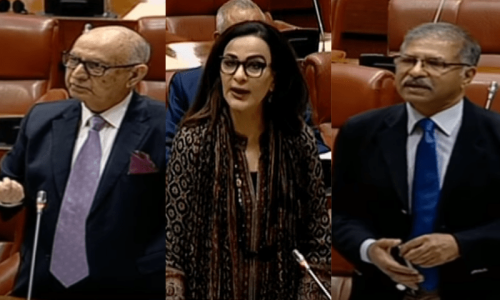ON Feb 11, the Sindh Assembly passed a bill reviving student unions. The bill received support from both the treasury and opposition benches. Campus administrations have been tasked with developing the modalities. Many quarters, including politicians, have hailed the move.
Most progressive people have welcomed the decision. However, many concerns have been voiced by students’ parents whose generation can recall the times when unions existed and also the 1980s when they were banned. Frequent campus closures, disruption of academic activities, uncontrolled violence leading to loss of life and destruction of campus property, intimidation of university staff, misbehaviour with professors, open display of arms and ammunition and the resultant academic loss are not memories that can be set aside. The bigger question is how university administrations will conduct academic life and evolve the otherwise desirable culture of student democracy without jeopardising education.
Across the globe, student unions have evolved as democratically run institutions to safeguard and promote the interests of the student fraternity on campuses. In any institution, there are several interest groups — students, faculty, non-teaching staff and university management. The corporate sector and industry also participate in university affairs. Universities often function in a manner where interaction between various stakeholders is often undemocratic. Crucial decisions such as fee increase are taken by managements often without consultation with other stakeholders. In such situations, a well-organised student union is an effective negotiating tool for the collective interest of students.
Besides, student unions are training grounds for future leadership roles. Many world leaders, including Pakistani politicians, were involved in union affairs as students. The unions also provide a platform to organise events, activities and other creative pursuits. They work as autonomous organisations within the campus framework where the management normally gives due regard to their existence and conduct. Almost all universities and higher education institutions, particularly in the West, have a tradition of strong and vibrant student unions.
Concerns have been voiced at the rebirth of student unions.
In Pakistan, student unions and their activities were seen as near-criminal by successive governments. Some campaigns led by students in Karachi had far-reaching consequences for the political destiny of this country after independence. In the early 1950s, a city plan was made to accommodate the functions of a capital in a suburban location. Soon thereafter, student protests erupted against a high-handed move by the civil administration. Many believe that the decision to shift the capital away from Karachi was taken around that time. Besides the Karachi University was built in a location far from the city limits. During Gen Ayub Khan’s martial law, student unions were continuously hounded. Some years after the 1977 coup, the unions, that had been facing the establishment’s wrath, were banned in 1984. They now stand revived in Sindh after 38 years.
The past performance of various student unions has also been criticised. Student union activity was hijacked by external political groups. Instead of focusing on the well-being of the student body that these unions claimed to represent, many elected unions featured despots that aimed to enforce the political (and religious) manifesto of their parent outfits. Violence and the use of brute force became the trademark of student politics. Use of fire arms, taking campus management staff hostage, and clashes with other student groups left few to sympathise with the cause of unions.
Unions did not take into account the vital services needed by the student fraternity. Career counselling and seminars, healthy co-curricular activities such as declamation contests or literary and cultural pursuits, debates and guidance on political awareness were some domains which were hardly focused on during the tenure of the unions.
In the case of certain politico-religious parties controlling the unions, coeducation in universities became a burning issue. The situation became so bad that Rangers were posted at campuses to keep classes running. This was far from the ideal solution; however, it was the only option left to the administration.
The relationship of student unions and political parties, violence, the exploitation of unions for extra-academic purposes such as promoting religious extremism and intolerance are among those topics that must be thoroughly debated. The positive points too must be discussed. But above all, it must be kept in mind that channelling the energies of our educated youth in the right direction can lead to welcome social changes.
The writer is an academic and researcher based in Karachi.
Published in Dawn, February 24th, 2022












































